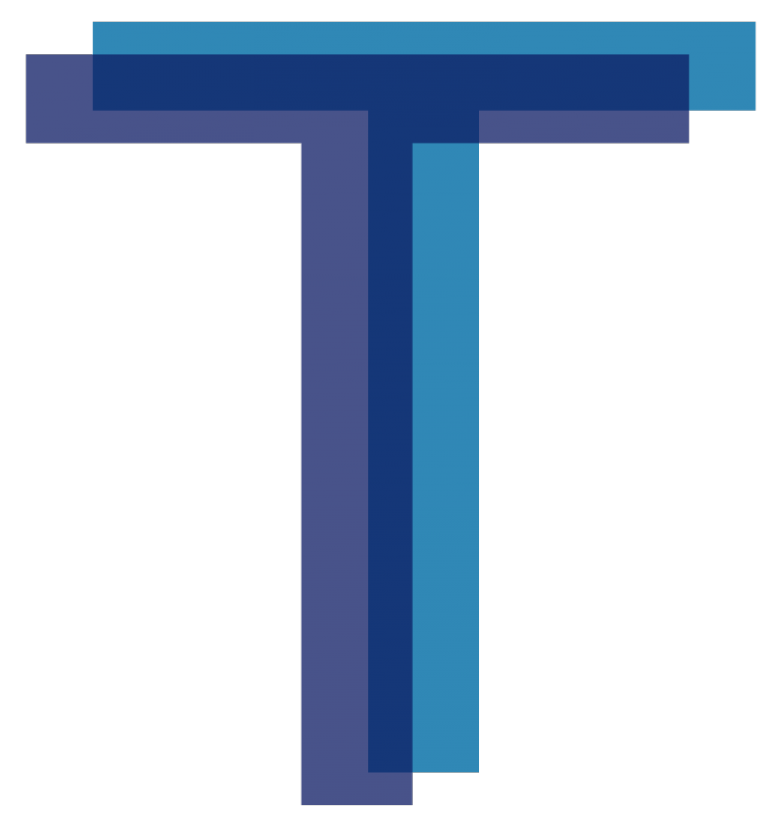Authors:
Carlotta Bonn
Dieter Plehwe
Moritz Neujeffski
In our previous blog post we found that the Global go to Think Tank Index (GGTTIR) has not frequently been addressed in traditional newspaper articles. Although attention has increased somewhat over time, references to the index are more or less confined to English language papers in a few countries only (USA, India, China). A total of around 50 mentions per year in newspapers around the world lately does not suggest a strong presence in traditional newspapers.
Since the boundaries between traditional print media and new (online) media are increasingly blurred and since the boundaries between certain categories of think tanks – think tanks focused on the purpose of political commentary and op-ed writing, partisan think tanks – and certain type of social media (blogs) are also floating we expect that the GGTTIR has a stronger presence in online media.
General internet presence: search engine hits
First of all we tried to get a general idea by looking at the number of search engine[1] hits for the report in general and for each yearly report in particular.
Our searching string for the GGTTIR in general was “global go to think tank index report”. We found about 22.000 hits in total. In order to observe the evolution of the internet presence we analysed the results for the individual reports per year. Because the 2019 report has not been published yet – it is due in January 2020 – our most recent report is the 2018 edition, which has been published in January 2019. We used the term “global go to think tank index report + (specific year)” as our search string. For the reports from 2008 until 2012 there were almost no hits at all. From the report of 2013 until the report of 2016 the number of hits grew from 402 to 1.730 per year. Surprisingly the number of hits for the report of 2017 is a bit lower with 1.510 hits, which might indicate that the resonance of the GGGTTIR has reached its peak already. For the report of 2018 (published in 01/2019) the number is not yet as high as in the previous two years but the relevant period of time is much shorter (9 months instead of 20 months possible reporting for the 2017 report).
It is important to note that our results do not refer to hits per year, but to hits per report of a specific year. It is obvious that the 2016 report with the highest number of 1.730 search engine hits hits since January 2017 has been the strongest ever so far. The number of 1000+ search engine hits per year (referring to websites, social media) is clearly way above the figure of 50 mentions per year in newspapers. But what exactly do the hits refer to?
Examining more than 22.000 hits individually is beyond our capacity. As a short cut and preliminary approach we took a closer look at the first 100 search engine hits. Based on our theoretical discussion of the role and relevance of a perception index and ranking of organizations (compare first blog post) we assume the main purpose of the GGTTIR to consist of generating publicity for the think tank community as a whole and for the particular group of leading think tanks in particular. The preliminary analysis of hits seems to confirm this perspective. 62 of the first 100 hits were articles, press releases or the like about a ranked think tank. Most of them were from the think tanks themselves on their own website, some were from online newspapers or websites from other organizations. 12 hits were about events that took place either to talk about think tanks and why they are important or were launching events of a report. 10 of the first 100 hits were articles which inform about the ranking in general. The other four categories contained hits about specific reports (8), countries with successful think tanks (5), critique of the ranking (2) and one hit was about a book, which was published by James McGann. Even if this finding needs confirmation by a more comprehensive analysis of the search engine hits the result shows that just like in the newspapers, the online media reports are almost universally positive about the GGTTIR and that the index and the ranking is mainly used by ranked think tanks for good publicity.
Social Media presence
In the next step we looked at the Social Media presence of the Global Go to Think Tank Index. James McGann himself has a Twitter Account with 84 Followers. The Think Tank and Civil Societies Program (TTCSP) has a Twitter Account with 2.922 Followers which is a respectable, but still not a very high number. On Facebook the TTCSP page has 2.825 Likes and 2.955 subscribers. These numbers (all snapshot figures October 2019) suggest that the GGTTIR has not been very popular in the main social media that are likely to cover think tank related work. In order to assess the limited success of the GGTTIR, however, we need to look at the online presence in comparative perspective
GGTTIR internet presence in comparative perspective
Since 1.510 Google hits for the 2017 GGTTI report may not be such a large number for a global index and ranking that has been around for a decade we decided to look at the web presence of other civil society and private sector indexes and ranking reports in order to gain comparative perspective. Although it is fair to challenge such a comparison due to the different target organizations and / or the different character of the organizations in charge of the index and ranking effort, we hope to gain some insights that help to assess the GGTTIR effort.
Times Higher Education World University Ranking
First we took the “Times Higher Education World University ranking” and again checked the overall hits and hits per year. Both think tanks and universities are organizations operating in the knowledge sphere, though universities arguably are quite important to a larger number of people on a regular basis (students, parents, employers etc.). Unlike the university based GGTTIR, the Times Higher Education ranking is produced by a commercial publishing house.
Unsurprisingly, the total number of hits of the search string “Times Higher Education World University ranking” at 91.900 is quite a bit higher than the number of hits for the GGTIR. The initial year of this ranking was 2011 and the search engine hits of this year already amounted to 1.010. They grew year by year until 2018 when they peaked at 4.410 hits. Additionally the Ranking has an own Twitter page with 37. 000 Followers and an own Facebook page with 47.794 Likes and 48.750 Subscribers.
This university ranking thus generates more than three times the attention generated by the GGTTIR in terms of search engine hits per year and has a much wider following on twitter and Facebook.
Transparify Reports
We looked at the work of Transparify next, a civil society based initiative that has published three reports about global ratings on the transparency of think tanks so far. The first report was published in 2014, the second one was published in 2015 and the third was published in 2018. The organization also published additional reports about think tanks in the UK in and in Canada in 2017. We did only find 390 search engine hits for the search string “Transparify report” (October 16, 2019). Compared to Transparify, the regular publishing record of the GGTTIR appears to yield a better result. However, with 2.201 followers on Twitter, Transparify does almost as well as the GGTTIR even though they have not published as much and their initial year was 2014.
CAF World Giving Index
Another ranking we looked at because it is in the realm of civil society is the CAF World Giving Index which is published annually since 2010 by the Charities Aid Foundation (CAF). It ranks countries worldwide by the amount the citizens of the country “gave” in one year. Apart from looking at money donations the report also examines help offered to strangers and volunteering time to an organization.
For the search string “CAF World Giving Index” we found 11.900 search engine hits, which is less than we found for the GGTTIR. The number of hits per report started pretty low for the 2010 report with 118 hits only. For the current report (World giving index 2018), however, the numbers are up to 2.370 hits.
Furthermore the CAF has 28.100 followers on Twitter which is surprisingly high and might be a reason for the recent growth of search engine hits per report.
Fortune 500 Ranking
Finally, we also looked at the Fortune 500 ranking, which has been published annually since 1955 by the Fortune Magazine and lists the 500 largest US firms. Unsurprisingly, Fortune 500 plays in a whole different league. For the search string “Fortune 500” we found 26.800.000 Google hits which is a huge number. There are several reasons for such popularity. The list has been published for 64 years now which is much longer than the other rankings we looked at. Secondly, it is published by one of the most popular economic magazines in the United States, the Fortune Magazine which has 2.27 Mio followers on Twitter and 1.62 Mio Likes and 1.23 Mio subscribers on Facebook. The listing is relevant to a very large number of shareholders, employees, managers, investors and the general public interested in business developments. Although it does not make sense to compare the Fortune 500 ranking with the GGTTIR it is nevertheless interesting to see how popular a ranking can be if it has powerful institutional backing like a popular and wealthy publisher. Not only the (quality of) information presented in a ranking and its audience is important, but also who publishes the material and where. Looking at the social media figures in comparative perspective it is clear that the GGTTIR is still confined to the community of think tank professionals. The interest in this community can be considered to grow given the additional effort of Transparify and the (slow) growth in terms of the social media presence.
Think Tank perusal of GGTTIR Report
Since we assume the main purpose of the GGTTIR Report to be in the realm of platform and publicity generation, we expect that highly ranked Think Tanks in particular are likely to use the GGTTIR to inform (and brag) about their position in the Ranking on their Website. The report is likely to offer useful marketing information for the upper level think tanks in particular. Do they make use of the report in this way?
Again a comprehensive research design is beyond our capacity. To check whether our hunch is plausible, we searched the Websites of the think tanks that were ranked as the first 60 in the categories TOP Think Tanks worldwide (US and non-US) and TOP Think Tanks worldwide (non-US) of the GGTTIR 2018.
In the first category (Top think tanks worldwide, US and non-US) exactly half of the 60 top ranked think tanks mentioned the Ranking and their position on their own Website. In the non-US category, almost two third (39) of the think tanks mentioned it.
We first assumed that only the Top (10) think tanks would be likely to use their rank for publicity but that is not the case. It did not really matter if we looked at the first ten or the lower ranks. So not only the Top 10 or Top 20 or Top 30 mentioned the Ranking on their Website. But under the Top 50-60 in the US and non-US category only two think tanks mentioned the ranking. In the non-US category seven think tanks between Top 50 and 60 mentioned it. In order to firmly establish that the usage of the index for think tank self-promotion declines below rank 50 we need additional research.
The findings confirm that a large number of highly ranked think tanks do care about the ranking and their position and they use it for publicity. Some Think Tanks even mentioned the ranking on the Start page of the website or at the “About us” page. But the fact that half of the U.S. TOP listed and one third of the global TOP listed think tanks do not refer to their position in the ranking can be considered a challenge to the platform and publicity generation argument. At least it needs to be explained why half of the top listed U.S. think tanks and one third of the global top listed think tanks do not use it for self-promotion. Among the top 60 worldwide (US and non-US think tanks) 13 are from the US and four of them only mention the GGTTIR on their website, in fact. Many top listed think tanks may not perceive of a need for an additional boost of their publicity and recognition. But criticism of the GGTTIR in the U.S. in particular may have also led some think tanks to be cautious about the utility of the ranking. In general we can assume that the GGTTIR is more useful as a marketing instrument for the think tank community outside the United States, though we would need a more comprehensive research design to proof this result based on a the analysis of a relatively small sample only.
Conclusion: summary of findings and general assessment
Summing up the results of our analysis we can say that the Global go to Think Tank Index is clearly much more present in online media than in the traditional media. Many search engine hits lead to Think Tank websites, which confirms the expectation of utility of the GGTTIR for think tanks that use if for self-promotion. Since quite a large number of leading think tanks refrain from utilizing the GGTTIR for this purpose it is interesting to find out more about their reasons for doing so. It may be because the top think tanks in the U.S. in particular do not feel a strong need for an extra boost of publicity and recognition. It may also be due to the criticism of the GGTTIR which may lead think tank managers to doubt the utility of this tool. Outside the U.S. more of the top listed think tanks do use the ranking, which suggests greater utility of the ranking in countries where think tanks still are less well established. In terms of social media presence on Twitter and Facebook, the GGTTIR still appears to have a lot of room to grow. With about 3000 followers and subscribers it caters to a fairly small community of think tank aficionados around the world. Other rankings looking at universities, charitable activities let alone corporations achieve a much higher presence, which is likely due to the larger audience and the backing of the index and rating effort by well-known journals like Times Magazine or Fortune. But the quite a bit larger number of followers of the CAF World Giving Index suggests that GGTTIR (and the think tank transparency related effort of Transparify) have not yet exhausted their potential on social media.
Another sphere of relevance for the think tank universe is the world of academia. How does the report do in terms of citations in the academic literature? Has the Global go to Think Tank Index become an important work of reference in the academic sphere since it has been conceived back in 2006? We do not expect very strong academic relevance partly because of the the methodical shortcomings of the index. But we promise to take a closer look at the academic repercussions of the GGTTIR in the next blog post.
[1] We relied on Google to conduct our searches.


